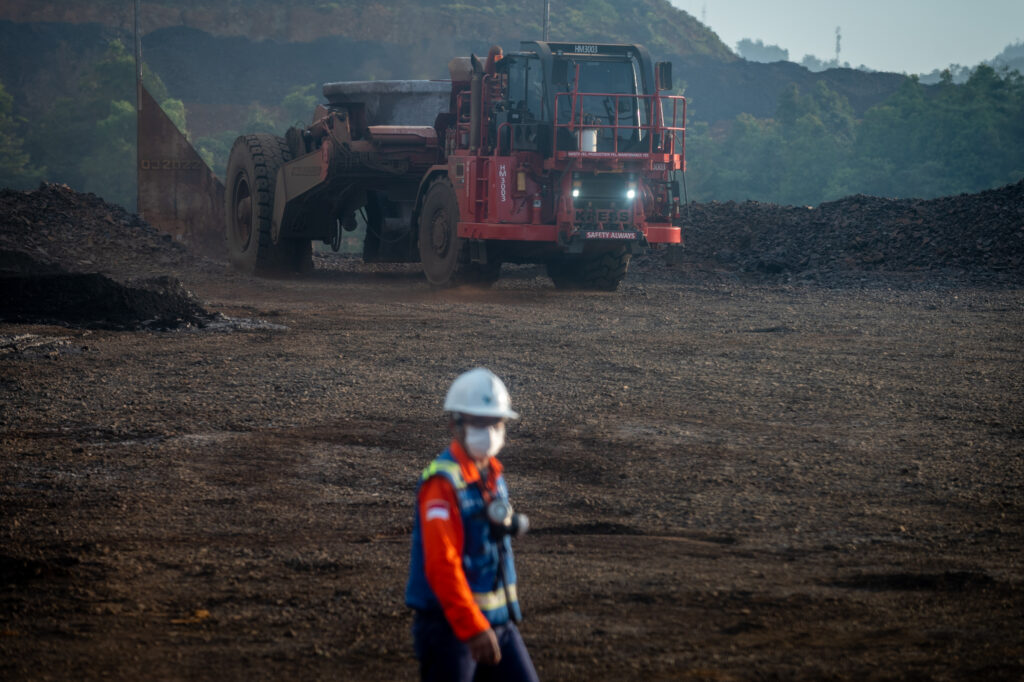Nickel is a key input in lithium-ion batteries, and as economies transition toward clean energy it is reasonable to assume it will be in high demand and be priced accordingly. In mid-February 2016, nickel was trading on the London Metal Exchange at US$6,990 per tonne. By 2022, nickel was regularly trading above US$20,000 per tonne.
Prices peaked in March 2022 at almost $45,000 per tonne before closing the year at just over US$30,000 per tonne.
Soaring nickel prices should be a boon for miners. In Australia, which produced 6 per cent of the world’s nickel in 2021, miners were eager to ramp up production and capture some of the value created by skyrocketing prices. Wyloo Metals, owned by mining magnate Andrew Forrest, acquired Mincor Resources in 2023 for AU$750 million (US$499 million) as part of a big push into nickel. Mining giant BHP also took over significant nickel operations in Western Australia in 2023.
But those sky-high prices did not last. Throughout 2023, the market value of nickel dropped, bottoming out at around US$15,900 per tonne in November. Though somewhat rebounding in 2024, for many Australian nickel miners, it is too little too late. Wyloo is shuttering its nickel mines and BHP indicated they will be taking an AU$2.5 billion (US$1.7 billion) impairment on their Western Australian nickel holdings. Many Australian nickel mines are facing similar fates.
A major driver of these developments is Indonesia, which holds the world’s largest nickel reserves. Indonesia has greatly ramped up production in recent years and flooded the market. In 2017, Indonesian mines produced 345,000 tonnes of nickel. In 2023, output was 1.8 million tonnes. This increase has caused prices to fall.
Australian miners were caught surprisingly flat-footed as this increase in production was a result of a deliberate strategy long telegraphed by the Indonesian government. Indonesia banned the export of unrefined nickel ore in 2020 to encourage downstream investment, especially in smelters and associated industrial activities. The long-term goal is to become integrated into international battery supply chains.
Though ore exports fell to essentially zero, a big uptick in refined Indonesian nickel started hitting the market. In 2019, Indonesia exported US$2.6 billion of ferronickel (a lower-quality nickel alloy typically used to make stainless steel). In 2023, Indonesian ferronickel exports were valued at US$15.3 billion.
This suggests that Indonesia’s downstreaming policy is achieving its main objective — increasing the amount of nickel refined in Indonesia. China has supported this objective on both the supply and demand side. Chinese industrial giants like Tsingshan are investing billions in nickel smelters and industrial parks, mainly in the nickel-rich island of Sulawesi. 98 per cent of Indonesian ferronickel exported in 2023 ended up in China.
Many Australian miners claim the market is being flooded by Indonesian nickel, which is driving down prices. Supported by the government, miners are now pushing for an ESG price premium that would distinguish between lower-quality Indonesian — and higher-quality Australian — nickel. The idea is that if consumers have more information, they will be willing to pay a premium for Australian nickel because of its higher quality and lower environmental costs.
This interpretation likely misreads the situation. It suggests that volatility in nickel prices is mainly due to a simple market imbalance and that with better information the market price will correct itself in a way that favours Australian nickel miners.
But nickel production is becoming less about price discovery and marginal costs of production. It is increasingly entwined with geopolitics, industrial policy and the politicisation of global supply chains, especially in next-generation industries like clean energy.
The Indonesian government clearly wants to increase domestic smelting capacity in the pursuit of its long-term industrial ambitions and is willing to intervene in the market to accomplish this goal. It is doing so indirectly by offering sweeteners like generous tax breaks to companies willing to invest in nickel mines and industrial parks. It is also intervening more directly — for instance, by taking majority ownership of major nickel miners such as PT Vale Indonesia. The goal is clearly to become a key player in battery supply chains, and the state is providing as much help as it can to achieve this.
So far it seems to be working. Indonesia is not just exporting ferronickel to China but has also significantly ramped up production of higher-quality nickel matte which is used in making batteries. The trade value of Indonesia’s nickel matte exports in current dollars increased from US$782 million in 2019 to US$6.6 billion in 2023.
Indonesia’s aggressive downstreaming is creating more domestic smelting capacity. It may also be causing an increase in the supply of nickel which — directly and indirectly — is driving down prices. This is bad news for Australian mining companies, who are primarily answerable to shareholders. It is an acceptable trade-off for Indonesia because the market price of nickel is less important than the government achieving its downstream industrial ambitions and increasing its role in battery production networks.
Geopolitics and industrial policy are increasingly consequential factors shaping the global nickel market. This is unlikely to be fundamentally altered by market-based tweaks such as better information disclosures. If Australia is to play a bigger role in an increasingly politicised network of global nickel production, it will likely start with acknowledging this reality.
James Guild is Adjunct Fellow at the S Rajaratnam School of International Studies, Nanyang Technological University, Singapore.


Leave a Reply